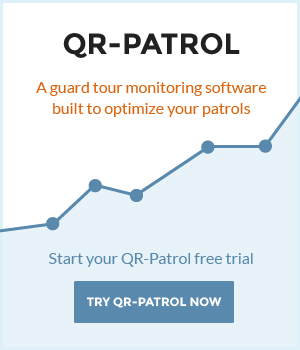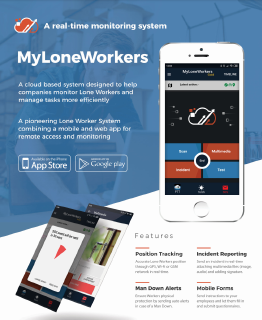
The Ultimate Guide to Creating a Lone Working Policy: Best Practices, Procedures, and Safety Measures
Working alone comes with risks.
Lone workers, whether security guards, maintenance staff, delivery drivers, or field service engineers, often operate without direct supervision. This can leave them vulnerable to workplace hazards, health emergencies, and even personal safety threats.
A lone working policy is essential to protect employees who work alone. It outlines safety procedures, risk assessments, and response protocols to ensure lone workers stay safe and connected.
But what is a lone working policy, and how do you create one that is effective?
In this guide, we’ll cover everything you need to know about creating a lone working safety policy—what it is, why it matters, and how to implement it effectively.
What is a Lone Working Policy?
A lone working policy is a formal document that sets out safety measures for employees who work alone. It ensures that lone workers understand potential risks and have clear procedures to follow. It aims to:
- 1 Identify risks associated with working alone
- 2 Establish safety measures to mitigate these risks
- 3 Ensure compliance with health and safety regulations
- 4 Define clear procedures for emergency response and communication
A well-structured lone working policy and procedure is crucial for organizations with remote, isolated, or unsupervised employees.
Why is a Lone Working Safety Policy Important?
Creating a lone working policy and procedure is essential for several reasons:
- 1 Compliance with Health & Safety Laws
Many countries require businesses to assess lone worker risks and provide adequate safety measures. A lone working policy ensures your business follows workplace safety laws.
- 2 Reducing Workplace Risks
Lone workers face hazards such as:
- Physical attacks (e.g., security guards, social workers)
- Accidents or medical emergencies (e.g., construction workers, field engineers)
- Equipment failures (e.g., utility workers, maintenance staff)
A lone working safety policy helps minimize these risks by setting up preventive measures.
- 3 Improving Employee Confidence
When lone workers know their employer has a solid safety policy in place, they feel more secure and confident in their roles. This boosts morale and productivity.
- 4 Enhancing Emergency Response
A well-designed lone working policy provides clear steps for handling emergencies, ensuring faster response times and better protection for workers.
With MyLoneWorkers' geo-fencing features, organizations can significantly enhance their security oversight, streamline asset tracking, and optimize resource allocation. By leveraging this innovative technology, businesses can proactively address potential security threats and ensure the safety of their personnel and assets.
Check now all of MyLoneWorkers advanced geo-fencing features as well as the benefits of geofencing integration for your lone worker safety and protection system.
Step-by-Step Guide to Creating a Lone Working Policy
- 1 Identify Who Qualifies as a Lone Worker
Not all employees work alone in the same way. A lone working policy should categorize lone workers into different types, such as:
- Mobile lone workers (e.g., delivery drivers, field engineers)
- Fixed-location lone workers (e.g., security guards, night shift employees)
- Remote lone workers (e.g., telecommuters, home-based workers)
Clearly defining who is considered a lone worker helps in creating targeted safety measures.
- 2 Conduct a Lone Working Risk Assessment
A risk assessment is a critical part of any lone working safety policy. It should include:
- Identifying hazards (e.g., environmental risks, security threats)
- Assessing the level of risk (e.g., likelihood and severity)
- Implementing safety measures (e.g., personal alarms, check-in systems)
For example, a security guard working alone at night may face higher physical security risks, requiring additional safety measures like GPS tracking and emergency response buttons.
- 3 Establish Lone Working Safety Procedures
Your lone working policy and procedure should define clear safety protocols for different lone working situations. Key procedures include:
- Check-in systems: Workers must check in at regular intervals using a mobile app or phone call.
- Emergency response plans: What to do in case of an emergency, including who to contact and how.
- Communication protocols: Ensuring lone workers have a way to stay connected (e.g., radio, mobile app, panic alarm).
- End-of-shift reporting: Lone workers should confirm they have finished their shift safely.
Protect your workers and elevate your safety standards with the MyLoneWorkers system, a comprehensive solution designed to keep lone workers safe, connected, and supported at all times. Whether your team operates in remote locations, hazardous environments, or simply needs extra security during their shifts, MyLoneWorkers provides peace of mind for both workers and supervisors. With real-time tracking, emergency response capabilities, and proactive safety measures, our system is built to respond instantly when seconds matter most. Don’t wait for an incident to happen—ensure your workforce's safety today with MyLoneWorkers.
By adopting MyLoneWorkers, you gain more than just a safety tool; you gain a reliable partner in safeguarding your employees. Our user-friendly app features seamless integration, advanced monitoring tools, and powerful alert systems, all designed to work together to provide a higher level of security. Equip your team with the technology they need to stay safe, improve productivity, and comply with safety regulations effortlessly. It’s time to take control of your workers' safety and give them the confidence they deserve to perform their jobs securely.
- Real-Time Location Tracking: Always know where your workers are, no matter how remote the location.
- Panic Button: Instant distress signal for immediate emergency alerts and assistance.
- Emergency Response Integration: Seamlessly connects with safety teams for rapid support.
- Remote Monitoring Dashboard: Centralized view for supervisors to monitor worker status and safety.
- Two-Way Communication: Direct contact with workers in real time for fast problem resolution.
- 4 Implement Lone Worker Safety Technology
Technology plays a key role in enforcing a lone working safety policy. Consider using:
- Lone worker safety apps – for real-time check-ins, GPS tracking, and emergency alerts
- Panic buttons or SOS devices – to request help in an emergency
- Automated call-in systems – requiring lone workers to check in periodically
These tools enhance lone worker protection by ensuring immediate response in case of an emergency.
- 5 Provide Lone Worker Training
A lone working policy is only effective if employees understand it. Organizations should provide training on:
- Identifying risks while working alone
- Using lone worker safety apps and devices
- Responding to emergencies and incidents
- Following lone working safety procedures
Regular training sessions help workers stay prepared and improve overall lone worker safety.
- 6 Establish a Lone Worker Monitoring Systemr
A lone working policy should include a monitoring system to ensure workers remain safe. Employers can use:
- GPS tracking – to monitor worker locations in real time
- Check-in alerts – to ensure workers report at set intervals
- Automatic emergency detection – using motion sensors to detect inactivity
This ensures quick intervention if a lone worker fails to check in or signals distress.
- 7 Review and Update the Policy Regularly
Work environments change, and so do risks. Your lone working policy and procedure should be:
- Reviewed annually to ensure it meets current regulations
- Updated after incidents to improve safety measures
- Adapted for new roles or working conditions
Regular updates keep the policy relevant and effective.
The MyLoneWorkers lone worker app is designed to enhance safety for employees working in hazardous or isolated environments, and one of its most vital features is the integrated panic button. This function provides workers with a quick and easy way to signal distress when faced with an emergency, such as an accident, medical issue, or threat from another person. With a simple press of a button, the worker can immediately notify their supervisor or emergency contacts, allowing for rapid intervention and minimizing the response time in critical situations. The panic button is intuitive, ensuring that even in high-stress scenarios, workers can call for help without additional complications.
Additionally, the panic button feature is equipped with real-time tracking, allowing supervisors to pinpoint the exact location of the worker in distress. This immediate location data ensures that emergency responders or safety teams can reach the worker without delay, especially in remote or hard-to-access locations. The ability to track the worker's whereabouts, combined with the panic button alert, makes MyLoneWorkers a powerful tool in protecting workers from harm. The location history also provides a valuable record of the incident for follow-up or investigation, helping to enhance future safety protocols.
Key Elements to Include in a Lone Working Policy
Every lone working policy should include:
- Definition of Lone Working – Who qualifies as a lone worker?
- Risk assessment procedures – How are risks identified and mitigated?
- Safety procedures and protocols – How should lone workers check in and report incidents?
- Emergency response guidelines – What should workers do in case of an emergency?
- Communication requirements – What devices or tools should lone workers use?
- Training and compliance – How are workers trained to follow safety procedures?
These elements ensure the policy is comprehensive and effective.
Best Practices for Lone Worker Safetyy
To further enhance lone worker safety, follow these best practices:
- Encourage a safety-first culture – Lone workers should feel comfortable reporting risks or incidents without fear of blame.
- Use technology to stay connected – Mobile apps and tracking devices improve real-time communication and emergency response.
- Set clear check-in intervals – Require lone workers to check in at scheduled times to confirm their safety.
- Customize the policy for different roles – A security guard may face different risks than a delivery driver. Tailor your policy accordingly.
- Always have an emergency backup plan – Ensure workers know what to do if they lose contact or face an unexpected threat.
Conclusion
A lone working policy is essential for protecting employees who work alone. By identifying risks, setting up clear procedures, and using modern technology, businesses can create a safe and secure working environment for their lone workers.
If your company has lone workers, now is the time to develop or update your lone working policy. A well-planned working alone policy not only ensures legal compliance but also improves employee safety, confidence, and productivity.
Are you ready to create a strong lone working policy and procedure? Start today and make workplace safety a top priority!








